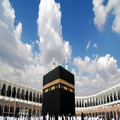Dubai's Roads and Transport Authority (RTA) is working on a huge infrastructure project that will include a dedicated lane for bicycles, scooters, and pedestrians.
This 13.5-kilometer walkway connects the Al Sufouh and Dubai Hills neighborhoods via Hessa Street. The project also includes the construction of two unique bicycle and pedestrian bridges spanning Sheikh Zayed Road and Al Khail Road. The program is part of His Highness Sheikh Hamdan bin Mohammed bin Rashid Al Maktoum's orders, which aim to develop Dubai into a bicycle-friendly city. The goal is to provide feasible options that encourage residents to participate in cycling.
Mattar Al Tayer, Director General and Chairman of the RTA's Board of Directors, emphasized that this initiative is a component of the broader Hessa Street development plan. The development spans 4.5 kilometers, from the intersection with Sheikh Zayed Road to the intersection with Al Khail Road. The project includes enhancements to four major intersections along Hessa Street, expanding the number of lanes from two to four in each direction, thereby doubling the street's capacity to accommodate 16,000 vehicles per hour.
The 13.5-kilometer designated path is 4.5 meters wide and has two meters set aside for pedestrians and 2.5 meters for bikes and scooters. This route links important locations such as Al Sufouh and Dubai Hills, providing service to 12 essential clusters that include Al Barsha and Al Barsha Heights, as well as residential, business, and educational districts. Along with improving first- and last-mile connections, the walkway connects to the Dubai Internet City metro station, which can accommodate 5,200 customers per hour on average.
A standout feature of the project is the two bridges, each designed with distinct architectural elements. The first bridge spans 528 meters over Sheikh Zayed Road, while the second is 501 meters long over Al Khail Road. Both bridges are five meters wide, accommodating three meters for bicycles and scooters and two meters for pedestrians. The design of the Sheikh Zayed Road bridge symbolizes interconnection and communication through intersecting lines, providing an enhanced view of the surrounding area and towers. The Al Khail Road bridge, on the other hand, incorporates lines of light from the sun’s rays, creating a tranquil environment for pedestrians and cyclists away from street noise.
The Hessa Street expansion is critical for improving road network infrastructure in locations such as Al Sufouh II, Al Barsha, and Jumeirah Village Circle. By 2030, around 640,000 people are estimated to profit from the initiative. It will increase the capacity of Hessa Street from 8,000 to 16,000 cars per hour, providing better traffic flow and minimizing congestion.
Major Intersection Developments
The project encompasses the development of four primary intersections:
- Sheikh Zayed Road Intersection: To help with traffic flow from Sheikh Zayed Road to Hessa Street, there is a two-lane bridging ramp that crosses the Dubai Metro Red Line.
- First Al Khail Street Intersection: This involves adding four lanes to each direction on the current bridge and enhancing surface intersection traffic control.
- Al Asayel Street Intersection: This intersection will have traffic enhancements as well as the expansion of the existing bridge to four lanes in each direction.
- Al Khail Street Intersection: Allows traffic traveling northward toward Sharjah with a direct bridge link.
The Future of Bicycle Paths
The new lane is a component of a bigger plan to increase the number of bike lanes in Dubai. The emirate's entire bike route is expected to increase from 544 kilometers to 1,000 kilometers by 2030. This enlarged network will travel through important locations like Al Barsha and Dubai Hills to connect coastal communities like Jumeirah, Al Sufouh, and Marina with exterior tracks in Al Qudra, Saih Al Salam, and Nad Al Sheba. In order to guarantee safety and use and to promote cycling as a sustainable and alternate form of transportation, the RTA built these paths in accordance with international standards. This endeavor is consistent with Dubai's objective of enhancing connectivity and accessibility throughout the city by facilitating first- and last-mile travel.

